- Home
- Ramachandra Guha
The Picador Book of Cricket Page 10
The Picador Book of Cricket Read online
Page 10
He was not tall, but in his youth he was so proportioned as to give the effect of height together with a sinuous mobility concealing strength. I saw him first in a Champion County match at the Oval in 1925, in a team resplendent with all the batting talents, where his place was at 7 or 8. For Gloucestershire he had had a false start, owing to qualification trouble, and on resuming after an interval had begun to impress everyone with the astonishing power and correctness of his back play, his intensely aggressive off-side hitting, and (thrown in as if casually) bowling and fielding beyond the useful. That same season he had roused northern hackles by battering into impotent pulp, on its own ground, a Lancashire attack which included Macdonald, Dick Tyldesley and Parkin, to the value of 250 runs. In the match I saw his batting performance was negligible, and in any case I did not see it; but he bowled with an exciting swirling run-up and arched action; and he stood close up in the slips and held on to a buzzing cut with a practised ease that I was to get to know.
That winter he went on a tour to the West Indies, collected over 200 in an unofficial Test match, and came home with a serious illness that put him on his back during the crucial year of 1926, when he would otherwise have been fledging himself against the Australians. I, who under the spell of Hobbs took little note of him, let him slip from my memory and concentrated on the main issues; one young batsman the more or less did not matter. Hobbs, Sutcliffe and Rhodes had won us the Ashes, and what need had I to grieve for the loss of a promising all-rounder? It was true that when the next season began I looked for his return with some interest, remembering his great promise and feeling for him in an ordeal, that of re-establishing his confidence in himself, that must have been at that crucial stage in his career (he was not yet twenty-four) a rather unnerving one.
He answered my interested curiosity in the best possible manner. It was a filthy season, strewn with rains and ruins, a tattered squally ragbag of a summer conspicuous for abandonments and butt-ends of drowned cricket matches; it abides in my memory (I was in the Fourth XI at school, batting nervously and ineffectively, and I remember it well) as canopied with low racing clouds and bespattered with vile blowing showers. In this shambles of a season Walter Hammond came back into the game and instantly scored a thousand runs in May. His long rest had filled out his figure and, apparently, given him renewed confidence. From the very first match, which was against Yorkshire, he laid into the bowling with a power quite out of this world; it was in this dim and dripping May of 1927 that cricket first found itself enriched by the storming beauty of those murderous off drives. Many can now remember the iron summer of 1947 and the bushels of runs gathered in by Edrich and Compton on the brown baked grounds on the sweating sweltering afternoons of high June. We held our breath at their rapacity then, it is true, but it was nothing to the sensation that hit us like a planet twenty years before under the curtains of cloud, as Hammond in his billowing shirt with buttoned-down sleeves raced to his thousand between the freezing showers. Yorkshire, Lancashire, Surrey, Middlesex – all were met and massacred; and if the unconscionable weather had not entirely collapsed in June he would have tacked on another thousand by the end of that month to match the fruits of the first. In that marvellous first season of his true fulfilment he was established for good and all as one of the great. From that time forward he never lost his place in the world’s esteem or in mine; and from the first Test in the next season against the West Indies at Lord’s, until the last Test in 1946 against India at the Oval, when I saw him bat for the last time on a cheerless windy wet day in just such another season as that of his first blaze of splendour, no England side, in England, ever took the field without him, save once when he was suffering from throat trouble and could not be considered . . .
There never was an athlete, in his younger days especially, so lightly and delicately poised; yet there was no tension in his attitude, only a limber felicitous disposal of the limbs in poses that seemed to fall instinctively into attitudes of grace. His delicacy had nothing of affectation about it; it was a muscular strength that carried with it not a pose or a presumption. He stood in the slips on legs planted firmly, rather wide apart, the body flexing from the hips, the hands alert; his walk from one end of the wicket to the other was enough to reveal the grace of those compact muscles; his cap slightly askew, his nose in the air, he distilled a certain detached indifference into his manner. When he came to bat he injected into this detachment a suspicion of what might be called hostility; the better the opposition the intenser this became. On rare and special occasions it was reinforced by a flavour of insolent contempt. His eyes narrowed; as he stood at the wicket he seemed all shoulder and bat and pad. And when he moved from the static to the dynamic his feet slid as quietly and as inevitably as a dancer’s dancing in tune. As the years proceeded and his frame thickened there seemed no corresponding slowing down of his footwork; only an increasingly obvious source of power behind the stroke, where previously there had been surprise at the stinging unexpectedness of its violence.
Two particular strokes of his I do remember out of the long panorama of the innings I saw him play; neither of them strokes for which he was renowned. Eleven years separated them; September 1928, on the eve of his great progress through Australia, and August 1939, on the eve of something quite other. On the first occasion, willowy and fresh with the assurance of powerful youth, coming in after Hobbs and Woolley in a thunderous batting order for the Rest of England against Lancashire the champion county, he received in his first over a rasping break-back from Macdonald off the line of the middle and off stumps. It was a swine of a ball to have to counter so early in his innings; it would have picked the leg stump from behind most batsmen before they were aware of its lethal last-minute dip. Hammond tucked his nose down over it and glanced it clean off the bat’s middle for four, a stroke that he did not play often and which with the apotheosis of the inswinger and the leg trap few batsmen remember to use nowadays. The ball glittered like a jewel as it went to the rails in a streak; and although he was caught at the wicket not many minutes later, and a fabulous innings built itself around our ears with centuries by Hobbs and Sutcliffe and Hendren, and various lashings-about by Woolley and Leyland and Ames, yet that one stroke is the sole enduring legacy, for me, of the day’s play.
I sat in the pavilion then, high behind his back; eleven years later family necessities had stronger demands and I had discontinued my membership; and I watched the last first-class match that the Oval staged before Hitler invaded Poland from the bob seats alongside the Vauxhall stand, far in the distance and remote from my accustomed contacts. In this last Test match the West Indies strove and stormed with some success to break an England side that harboured the remnants of the one that had beaten Australia on that ground twelve months before; and Hammond for a long time made strangely heavy weather of fast bowlers, notably Constantine and Martindale, whose bite was every bit as bad as their bark. All of a sudden, out of a patch of somnolence, came a thunderbolt of memorable force. Hammond had leaned back and hit a short ball on the off stump with fearful power into the unguarded areas about long on – down to my very feet, in fact. I have rarely seen a ball travel quicker; at one moment it was going normally down the pitch from the bowler to the batsman; at the next it was fearsomely among us, cutting a smoking path through the grass. Just an ordinary pull, but with the impact of a steam hammer.
It may be that these isolated strokes surprised and dazzled by their unexpectedness, and that it is on that account that they have outlived in my memory the more characteristic delights with which he normally adorned his play. It was true of Hobbs that his strokes all round the wicket were so consummately skilful that he did not possess one that materially outshone the others, nor were any of the normal orthodoxies lacking; and that therefore you thought of Hobbs without particular reference to any one favourite shot, but in the context mostly of his departure from the usual . . . It would not have been wrong to say the same of Hammond: I have a photograph of a match in Au
stralia in 1928 in which he has just executed the most delicate tickle of a late cut; he excelled in the towering full-shouldered clump straight back over the bowler’s head, with which he once hit the ball clean through the pavilion door at Lord’s and landed it first bounce crack against the far wall of the Long Room; and, as I have already shown, a leg glide of his is immortal in my memory. The difference between him and a master like Hobbs was that no wile of bowler, eccentricity of pitch or vicissitude of game could ever induce the latter to drop a single stroke out of his repertoire; he used them all with great safety and penetration, whatever the circumstances. Hammond, on the other hand, felt compelled to trim his sails to the prevailing wind; and it is said that experience of one kind and another led him quite early in his career to dispense with the hook. At least that is what we are told, and I admit I did not, so far as I can remember, see him execute this stroke; yet there remains the wry remark of Robertson-Glasgow to the effect that Hammond may possibly have dispensed with the hook but he had never noticed the lack of it when he bowled him a long hop. But if he did go lightly on certain on-side shots it is a matter of resonant history that he made up for it on the off.
Between backward point and mid-off Hammond is for all time undisputed king. On the ground or in the air they went from the rich middle of his bat like bombs. His methods of attack varied, his footwork never. That was always light and pliant, manoeuvring his powerful frame to a nicety at a split second’s notice; but in attack he would bring into play the colossal tension of his great shoulders and reinforce it with the whipped uncoiling of his wrists – or he would stand erect and use the wrists alone, as he levered the shot off his back foot with all the muscular power that he could gather into the action. If he went out and drove off the front foot, God help mid-off or extra cover if it went along the ground and they got a touch to it; it must have been like being handed for a moment or so a ladleful of melted steel. More often it would beat all fielders running all ways, or if he raised his head a fraction early, as he sometimes did, it would whizz like a golfer’s drive over extra cover’s head with a strong bending swing to it; at other times it went straight, with a long hanging carry. But the gem was the upstanding slash off the back foot. Bowl Hammond a quick good-length ball on the off stump or outside it and either mid-off, extra cover or cover himself would have to dash or dive; bowl the same ball further up or shorter, it did not matter, and he would crack it square as it passed him, rising on his toes and thrashing across the flight with an uncanny precision of timing, so that elders with their heels on the very fence were lucky if they had moved when the ball hit the rails. Woolley’s off drives were perhaps smoother and sweeter; but for power and glory and grace Hammond’s off-side play was the major delight of twentieth-century cricket.
I am one of his most devoted, not to say fanatical, admirers; and yet the full irony of frustration was reserved for me by fate; before me indeed his superb panoply of batsmanship was never displayed in its full splendour. I saw his greatness fitfully like the sun on a cloudy day. As for so many tantalizing years Jack Hobbs had done, so Hammond excelled in incredible feats the day before or the day after I watched him vainly for full measure of success. The first time I saw him in the full tide of his mature greatness, in his destroying summer of 1927, he had (would you believe it?) been out the very last thing the night before, the very last thing. Later in the barren day he came out to field with the rest, impeccably laundered I remember, and treading with the assurance that he was beginning to wear as a trademark; but I never saw him bat that season, and in the next, when he was if anything even more consistent, I watched him scrape 3 two days before he launched himself on that fantastic week of all-round proficiency at Cheltenham of which I have already made breathless mention. Then in his last innings before he went through Australia like a withering flame I saw him make 9. On the one occasion in the next season when I saw him bat he was caught one-handed in the slips for 8.
For better or worse this kind of experience continued throughout his career. I did see him make one century, and a satisfying proportion of another; and I would like a pound note for every day on which I had leisure to watch him in the field. In the early part of his career indeed there was plenty of opportunity to consider him as a bowler; and I accept these visions of his out-cricket as valuable substitutes in my own experience for the prime satisfaction of watching him at his batting. For Hammond’s greatness was spread evenly over all his play; it was in his slip fielding as much as in his batting, in his bowling as much as in either of the other two. By this I do not intend to write him down as a great bowler – only as a great cricketer bowling, who could indicate by his bowling that he was out of the ordinary, even if his bowling was not. And sometimes it was. His bowling had the Hammond mark of assured distinction upon it. His action was the most beautiful I have ever seen among medium-paced bowlers; for grace and felicity Larwood and Macdonald were better among fast men and Verity among the slows, but Hammond’s run-up like a bird’s flight curve, and the splendid arching back of his body as he went into his action, were only extensions, variations, comments indeed on his great cover drive or his back-foot slash. He swung the new ball viciously away from the bat and he was said to come off the pitch as unexpectedly quickly as Maurice Tate. An all-rounder of such commanding vigour and competence as Hammond could not fairly be expected to practise all departments of the game with equal assiduity, and it was his bowling that quite fairly and naturally was allowed to fall into disuse. It was a young man’s art; and if I want to recapture quickly to my imagination the young Hammond it is that swallow-swerve run-up I remember most readily and the arched enchantment of the free light action following it.
The rest of his art he preserved unjaded into near middle age. It is a deplorable chance, and I believe it to be only a chance, that decreed that on the tour of Australia which concluded his career he should have been in his own special context a failure. We think of him therefore as petering out and retiring not a moment too soon. We forget that in the streaming wet season of 1946, the prelude to his last tour, he topped the English averages by the height of the stratosphere with an average of over 80. We forget that he had just as disastrous a Test series as far back as 1934; we forget easily enough that his performance on the ill-fated tour gave him an all-over average of 41 and included two masterpieces of innings of 32 and 23 on the spitting swamp of a Brisbane wicket where hardly anybody else got double figures. It is true that in the Tests that followed he did not do very well; but there were preoccupations in his mind, and he was leading a side of patchy and experimental quality. Let us remind ourselves that in what was virtually his last first-class match, a Test against New Zealand (though twice later he played in first-class games, one of which was as recent as 1951), he scored a splendid and selfless 79 and held a peach of a catch at slip.
A peach of a catch at slip; almost an inevitability when Hammond was playing. In the early part of his career he paraded the covers and the outfield, and I have seen him sprint like a stag with a real runner’s rhythmic action to cut off a four; but all his Test-match days were spent at slip, and as for Gloucester – what Charlie Parker owed to him is only matched by what he owed to Charlie Parker. Close up on the bat’s shoulder for Parker; back fifteen yards for Larwood, within chatting distance of the wicketkeeper; for twenty years that was his inevitable post. In Test-match action pictures from 1928 to 1947, with England in the field, there he is, receptive and alert, cheek by jowl with Ames or Duckworth or Evans, flanked by Chapman or Hendren or Compton. In action pictures of Bradman or Woodfull or McCabe or Barnes, there he is brooding in the background, distinctive, unfussy, virtually infallible. It was highly characteristic of him that he never in his life made a spectacular catch, though it is probable he took a hundred or two in his time that no one else could have touched. Where Chapman, wonderful fielder, might have hurled his vast weight sideways and flicked the ball one-handed an inch from the grass while rolling desperately over, Hammond would have take
n the very same catch in his two hands, ankle height, to suit himself, with apparently time to roll up his sleeves first. Those exquisite light feet had taken him by anticipation plumb into the right place as the bat met the ball. He was the greatest slip fielder I have ever watched, and I watched him for long enough. He could absorb a cannonball slash or pick a bounding snick off the bat’s corner with an air of deepest unconcern.
Although not without gifts of showmanship, he was without showiness. He excelled, in the field, at understatement. In this manner he understated his way to over 800 catches in his career; of which one, a most uncommon affair, I remember to this instant as a blazing masterpiece. It was in a Test against India in 1936; in which, after ascertaining that I would not be present until the next day, he made 217. In the second innings of India in which many brave and inexperienced attempts were made, notably I remember by Amar Singh, to hit the not very formidable England attack off its length, a rather erratic G. O. Allen was bowling with great energy to a very erratic and equally energetic Mushtaq Ali – a batsman of freedom and beauty whose charm was expansive and evanescent, like candy-floss. This good batsman, faced with a rearing long hop outside the off stump, thrashed heartily across the line without bothering to get his foot to it, with the result that instead of going through cover like one of Hammond’s own specials it rocketed at fearful speed at the height of about eight feet through the gap between first and second slip, standing I thought a little on the close side for a bowler of Allen’s pace. Second slip was Voce, and the ball was by him in a blink, going like the dogs of war; but instinctively he leaped to it, grunting, at full stretch of his left arm, and as luck ordained got a touch on it with, I take it, his stretched little finger. The deflection was instantaneous and dramatic; the ball ricocheted like a shot off a shovel in the rough direction of the square-leg umpire; from eight feet in the air it shot steeply downwards like the hypotenuse of a rather erect right-angled triangle, its speed hardly decreased and its power to disconcert unexpectedly augmented. Hammond at first slip pivoted gracefully on his right foot, and with his back to the wicket and the batsman gathered in the catch just below his right armpit, one-handed, as it sped across his chest on the way to the opposite boundary. The surprise was not for the breathless speed of the manoeuvre, which was indeed breathless enough, but for the fact that Hammond accepted it as if it were part of some pre-rehearsed ritual carried out with care and elegance and watchfulness, but with no possible need for haste or surprise.

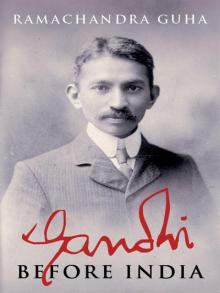 Gandhi Before India
Gandhi Before India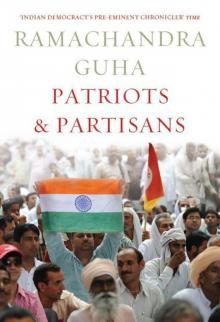 Patriots & Partisans
Patriots & Partisans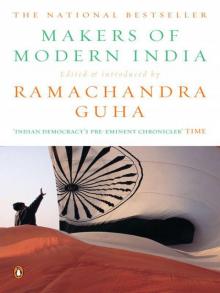 Makers of Modern India
Makers of Modern India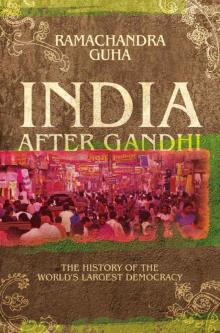 India After Gandhi: The History of the World's Largest Democracy
India After Gandhi: The History of the World's Largest Democracy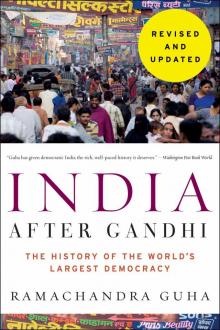 India After Gandhi Revised and Updated Edition
India After Gandhi Revised and Updated Edition The Enemies of the Idea of India
The Enemies of the Idea of India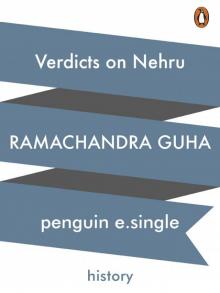 Verdicts on Nehru
Verdicts on Nehru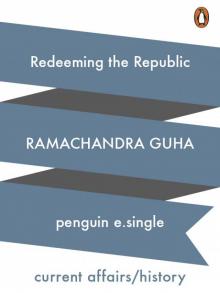 Redeeming the Republic
Redeeming the Republic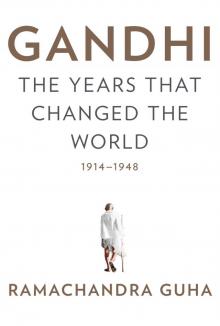 Gandhi
Gandhi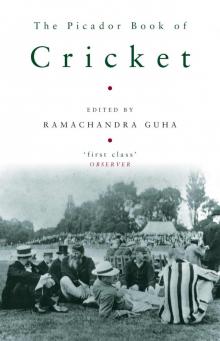 The Picador Book of Cricket
The Picador Book of Cricket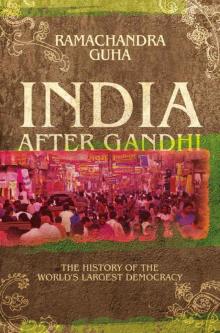 India After Gandhi
India After Gandhi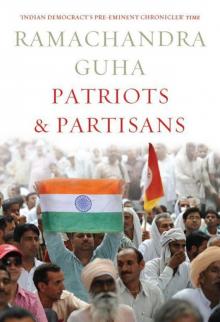 Patriots and Partisans: From Nehru to Hindutva and Beyond
Patriots and Partisans: From Nehru to Hindutva and Beyond